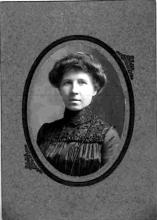You are here
8
The Business of Medicine
With the establishment of an organized medical society, Mecklenburg County physicians adopted standardized two-fee lists. One was for Charlotte and the incorporated towns and the other was for “regular county practice.”
County Practice Fees (1903)
- A home visit was $1.50 and additional fifty cents for every three miles the physician traveled.
- Obstetrical Cases were $7.00.
- After 10:00 p.m. the fees doubled.
Many of the diseases curable today often proved deadly. During Dr. Annie’s thirty year career in the county she witnessed deaths by malaria, typhoid fever, tetanus, tuberculosis, dysentery, pneumonia, flu, venereal diseases, and cholera. In addition, children’s diseases such as diphtheria, mumps, measles, chicken pox, scarlet fever, whooping cough, polio, croup, and rheumatic fever were equally common and often deadly. Yet, disease along was not the only culprit. These were the days before any safety regulations. A number of deaths were due to accidents at work in factories, mines, farming and other industries. In addition, an American woman’s chances of dying in childbirth were forty times higher in 1900 than they were in 2013. The lack of medical knowledge and complications of childbirth led to many women dying of blood loss, infection, puerperal fever, and a host of other causes. However, the knowledge of how diseases spread and could be avoided by simple antiseptic measures became the norm in most medical practices.
Source:
The photograph above was taken sometime in the 1910s. It is one of four images held in the Robinson-Spangler Carolina Room, Charlotte Mecklenburg Library.
